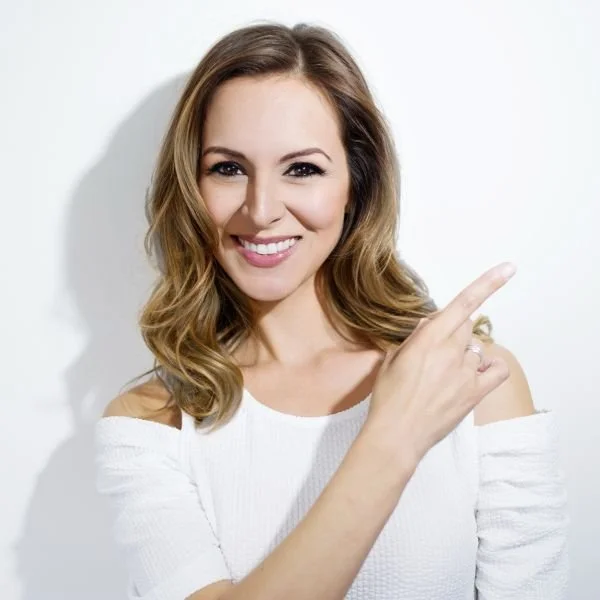The Secret to Real, Drama-Free Love
How Attachment Theory Can Transform Relationships
January 7, 2020 | Natalia Juarez
“Your task is not to seek for love, but merely to seek and find all the barriers within yourself that you have built against it.” — Rumi
I’m no stranger to relationship drama. In 2010, my engagement ended just months before my thirtieth birthday.
Over the next five years, I worked with three different therapists, read over 100 relationship books, had astrological and tarot readings, and even hired a life coach for $10,000. I went on 88 dates (I had a spreadsheet and everything) I was determined to turn my love life around and find real, lasting love.
I was a woman on a mission.
But not everyone saw it that way. I was called a hopeless romantic,a serial dater, a boyfriend hopper, ... you name it. From the comfort of their own relationships, many people would ask me, "Why can't you just be happy alone?"
It wasn’t until after years of searching that I stumbled upon the missing piece.
Discovering the Secret to Drama-Free Love
While stuck at a crossroads in my dating life—feeling attacted to the wrong people, making decisions I later regretted—I decided to ask my therapist (by this time, my third one) for her unfiltered opinion.
In typical therapist fashion, she didn’t directly answer my question. Instead, she suggested I look into Attachment Theory.
At the bookstore on the way home, I picked up Attached by Amir Levine and Rachel Heller, and within a few chapters, I felt like a light bulb went off.
Suddenly, everything about my love life started to make sense.
My attractions.
My choices..
My reactions.
And the way things always seemed to get so confusing and messy.
This sent me down a rabbit hole, and once I started learning more about this “secret,” I understood why I had been attracted to all the wrong people, and why I never felt “attracted” to the right ones.
Finally, after heartbreaks and epic relationship failures, I felt I’d found the missing piece in cultivating a fulfilling, healthy, and lasting relationship—Attachment Theory.
From there, everything started falling into place.
Attachment Theory: The Key to Understanding Your Relationships
If you've done any work on your relationships, you’ve probably encountered the concept of the five love languages by Gary Chapman. While understanding your love language—and that of your partner—is important, Attachment Theory takes things far deeper. It helps explain the emotional needs and behaviors that both you and your partner exhibit, especially when the going gets tough.
While the five love languages focus on how we express and receive love, Attachment Theory helps us understand why we choose the partners we do, why things work out (or don’t), and most importantly, how we can build the foundations for long-term relationship fulfillment.
Attachment Theory originated as a study of the early bond between infants and their caregivers. Over time, it has expanded to offer valuable insights into how we form and maintain emotional connections throughout our lives—especially in romantic relationships, but also with family and friends.
Our attachment styles are shaped by our upbringing, but factors like our personality and genetics play a significant role as well. Understanding our attachment styles can give us a clearer view of how we connect with others, why we respond the way we do in relationships, and how we can begin to create healthier, more secure bonds.
The Four Attachment Styles
Understanding your attachment style can be the key to unlocking healthier relationships. Here's a brief overview of the four attachment styles:
Secure Attachment (50-60% of the population): People with this style are emotionally well-regulated, have healthy boundaries, and feel safe in relationships. They’re often easygoing and comfortable with intimacy. After a breakup, they might say, “I’m sad, but I’ll be okay.”
Avoidant Attachment (25% of the population): These individuals are highly independent and value their space. They often keep emotions at a distance, sometimes appearing emotionally distant. After a breakup, they might say, “Next!”
Anxious Attachment (20% of the population): People with this style are deeply invested in their relationships and can become preoccupied with them. They seek constant reassurance and experience emotional highs and lows. After a breakup, they might feel devastated, thinking, “I thought this was my soulmate.”
Fearful-Avoidant Attachment (5-10% of the population): This style is characterized by emotional turmoil, where individuals both desire intimacy but fear it. They may push partners away while craving closeness.
Core Style & Relationship Dynamics
While everyone has a “core style” — the attachment style we naturally gravitate toward — the dynamics within a relationship can shift dramatically depending on the circumstances.
For example, when an anxious and an avoidant person interact, the result can be a passionate yet tumultuous relationship with a “come here, go away” dynamic. This is a scenario we often see in movies because it’s entertaining and oh-so-dramatic — perfect for the big screen.
But let’s be real: This kind of drama gets old fast in real life.
I quickly identified my core style as anxiously-attached. But, I also realized that with some securely attached men I had dated, I had behaved in a very avoidant way. My “gut” would tell me I wasn’t attracted to them, so I would unconsciously push them away—sabotaging yet another secure connection.
What I discovered is that I was drawn to avoidant men because part of me craved the push-and-pull dynamic I was familiar with. What I thought was “chemistry” was actually my anxious attachment style being triggered, creating a dysregulated nervous system.
I was addicted to the drama.
Through my personal experience and the experiences of hundreds of my clients, I’ve learned something important: The more attracted you are to someone, the more “anxious” you may feel—even if you have a secure attachment style.
Even if you generally feel secure in relationships, a particular person can bring out an anxious dynamic within you. This doesn’t change your core attachment style, but rather, it reveals a triggering dynamic specific to that relationship.
This is where things can get confusing.
The authors of Attached categorize people into three distinct attachment styles, with only 3-5% being a blend of all of them. However, from my experience, many people find themselves identifying as “mixed” because they can relate to different attachment styles depending on the particular relationship dynamic.
That’s why I emphasize that while we all have a “core style”, other styles can get triggered depending on the dynamics of a specific relationship, a certain person, or a major event, like a breakup or divorce.
Your Attachment Style is a Super Power
Having worked with hundreds of clients using Attachment Theory, I’ve discovered that there is no "right" or "wrong" when it comes to attachment styles. Each style has its own strengths and benefits (yes, even the avoidant style).
The challenges we face around attachment often arise when we're unaware of our style.
Too many people learn about attachment and assume that secure attachment is the “best,” that anxious attachment types got a bad hand, and that avoidants should be avoided altogether as romantic partners.
But that’s simply not true. Each attachment style brings its own unique gifts—its own superpower.
I firmly believe there are distinct advantages to both anxious and avoidant attachment styles, especially when you're in a healthy relationship, and you’ve learned to be attuned to your feelings and regulate your emotions.
For example, anxiously attached individuals often have a wide range of emotions. They're passionate, hyper-loyal, and deeply empathetic—qualities that help others tap into their feelings. In a secure relationship, anxious types are creative, expressive, and emotionally attuned, which makes them excellent partners when supported by healthy boundaries and mutual respect.
And we need avoidants too.
Not everyone is able to wear their heart on their sleeve, and avoidants tend to operate from a place of independence and drive. They're often charismatic and grounded, offering perspective and emotional balance, especially when in a conscious relationship with someone who understands their need for spaciousness and freedom.
When both anxious and avoidant individuals are aware of their attachment needs and triggers, they can complement each other beautifully. The key is awareness. Without it, attachment styles can operate unconsciously and cause unnecessary tension.
With an awareness of attachment needs and expressions, anxious and avoidant types can be in a complimentary relationship. The important thing is to become aware of your attachment style, so it doesn’t drive you unconsciously as it does for so many.
Once you become aware of your attachment style, you can do the work to cultivate what's called Secure Functioning—a way of relating that supports growth, balance, and emotional safety for both partners.
The Shift Towards “Secure Functioning”
Secure Functioning refers to a relationship dynamic where both partners are committed to creating a safe, stable, and emotionally supportive environment for each other. It’s not about perfection or always getting things right—it’s about having the tools and mindset to navigate challenges with mutual respect and trust, no matter your core attachment style.
In a Secure Functioning relationship, both individuals:
Feel safe: Emotionally and physically, both partners feel secure and supported, knowing they can express their needs and vulnerabilities without fear of rejection or harm.
Communicate openly: Partners are able to have honest, transparent conversations, even when it’s difficult, because there’s a shared commitment to the relationship’s well-being.
Respect boundaries: Each person honors the other’s emotional and physical boundaries, and both partners work to create an environment where their needs are acknowledged and met.
Work through challenges together: In Secure Functioning relationships, conflict and misunderstandings are approached as challenges to be solved together, rather than as signs that the relationship is failing. Both partners take responsibility for their own emotions and actions, focusing on resolution rather than blame.
Create emotional safety: This environment of emotional safety allows both people to thrive individually and as a couple, as they feel secure enough to explore their feelings, dreams, and vulnerabilities.
In short, Secure Functioning is about mutual care, emotional regulation, and a shared commitment to making the relationship a safe, nurturing space. It helps individuals manage triggers and navigate the ups and downs of life together in a healthy, collaborative way.
You Can Rewire Yourself For Secure Love
Attachment Theory isn’t just a lens through which we understand the dynamics of relationships—it’s a powerful tool for creating lasting, healthy connections. Whether you're anxiously attached, avoidantly attached, or securely attached, your attachment style is simply a starting point.
It’s your roadmap to understanding why you interact the way you do in relationships, and most importantly, it shows you where you have room to grow.
By becoming aware of your attachment style and how it plays out in your relationships, you can shift toward a more balanced, secure way of relating to others. The key is learning how to manage triggers, set healthy boundaries, and create a relationship dynamic that supports emotional safety and growth for both partners. That’s where Secure Functioning comes in—an intentional, conscious approach to relationships that fosters mutual respect, trust, and emotional security.
When both partners embrace Secure Functioning, the relationship becomes a safe space where love can flourish.
It’s not about finding a "perfect" partner—it’s about creating a partnership where both people can feel loved, supported, and emotionally safe, no matter their attachment style.
Ultimately, understanding attachment theory and working toward Secure Functioning is the key to overcoming the drama and building a love that is not just lasting, but deeply fulfilling.
You can rewire yourself for secure love and change the way you approach love—forever.
Ready to Take Control of Your Love Life?
Get personalized, high-impact coaching—whether you’re healing from a breakup or divorce, rebuilding a relationship, or navigating modern dating.
Explore my 1:1 coaching services and find the support you need to move forward.
Breakup recovery, recoupling, or dating strategy — personalized to your situation.



